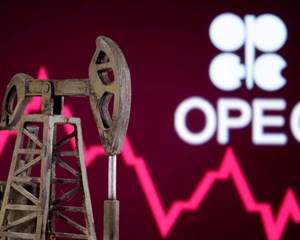Iran is a more likely source of new supply. The country's negotiators are trying to strike a deal with America that would lift economic sanctions in return for limits on its nuclear ambitions. If they succeed, Iran could add around 1m barrels a day to the market by the end of the year; it could also sell the 200m barrels it currently has in storage. Chris Midgley of s&p Global Platts, a data firm, points out that Saudi officials do not want a replay of 2018, when America's decision not to reimpose oil sanctions on Iran took them by surprise and sent oil prices lurching downwards.
伊朗是一個更有可能的新供應來源。該國的談判代表正試圖與美國達成一項協議以解除對其核野心的經濟制裁作為交換條件。如果他們成功了,到今年年底伊朗可以每天向市場增加100萬桶原油。它還可以出售目前儲存的2億桶石油。標準普爾全球普氏能源信息公司的克里斯·米德格利指出,沙特官員不想重蹈2018年的覆轍,當時美國決定不重新對伊朗實施石油制裁令他們感到意外并導致油價暴跌。
What, then, to expect from the cartel and its allies? There are three scenarios. One is that countries start producing whatever they want, a price war ensues, and oil prices tumble. Analysts reckon that this is the least likely outcome. Energy ministers still bear the scars of the ill-timed price war of March 2020, when Russia and Saudi Arabia failed to agree on production cuts. The market was flooded with oil just before demand suffered its covid-induced collapse.
那么,我們能從卡特爾及其盟友那里期待什么呢?有三種情況。一是各國開始生產他們想要的東西,隨之而來的是價格戰,油價暴跌。分析人士認為這是最不可能的結果。2020年3月,俄羅斯和沙特阿拉伯未能就減產達成一致,當時不合時機的價格戰給能源部長們留下了傷疤。就在新冠肺炎導致需求崩潰之前,市場上石油量充足。

Another possibility is that a new deal fails to be struck, and that countries stick to their current quotas. That would mean the extra post-July production increases that the market had been expecting do not materialise. Coupled with a summer uptick in demand from holidaymakers as they fly or drive to their destinations, that would push prices up, perhaps over $80 a barrel. The most likely outcome from the row, however, is a compromise. One possibility is that the UAE and some other countries are allowed a temporary increase in output and the thorny issue of quota revision is kicked down the road.
另一種可能性是,新協議無法達成,各國將堅持現有配額。這將意味著市場此前預期的7月后額外的產量增長不會出現。再加上夏季度假者乘飛機或開車前往目的地時需求的上升,這將推高油價至可能超過每桶80美元。然而,爭吵最可能的結果是妥協。一種可能性是,阿聯酋和其他一些國家被允許暫時增加產量,而配額修訂的棘手問題將被擱置。
Even if a deal is struck, however, the spat may portend further disagreements— and more price volatility. OPEC+ members are using divergent strategies when it comes to the energy transition and the oil markets, argues Francesco Martoccia of Citigroup, a bank. Faced with dwindling demand in the long term, some producers, such as the UAE, want to boost supply and monetise petroleum reserves earlier. Others, such as Saudi Arabia, want to restrict production to keep prices high. Such divisions will become even clearer as the shift towards a greener economy accelerates. OPEC's latest tiff won't be its last.
然而,即使達成了協議,爭執也可能預示著進一步的分歧——以及更大的價格波動。花旗銀行的Francesco Martoccia認為,當涉及到能源轉型和石油市場時,歐佩克+成員國正在使用不同的策略。面對長期的需求下降,阿聯酋等一些產油國希望增加供應,盡早將石油儲備貨幣化。其他國家,如沙特阿拉伯,則希望限制產量以保持高油價。隨著向綠色經濟的轉變加速,這種分歧將變得更加清晰。歐佩克最近的爭執不會是最后一次。
譯文由可可原創,僅供學習交流使用,未經許可請勿轉載。











